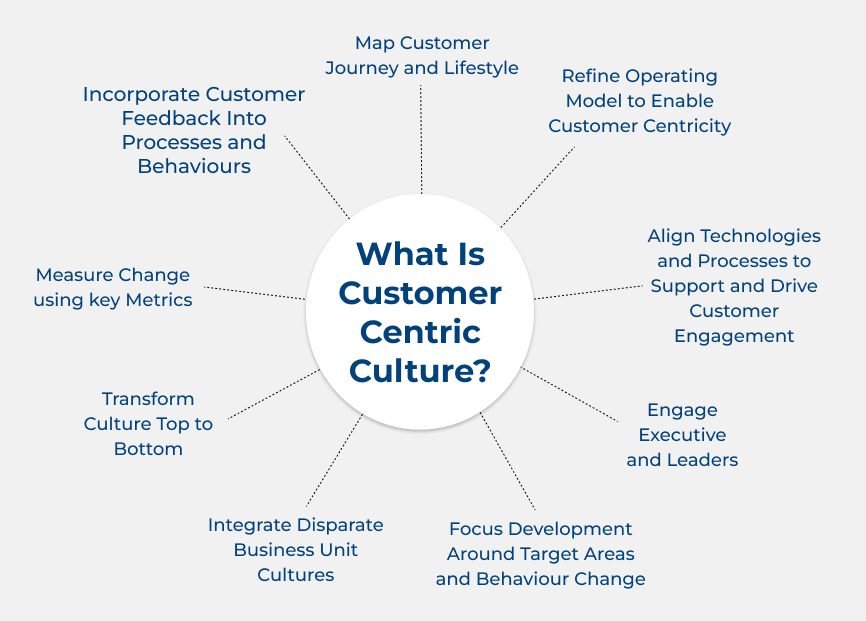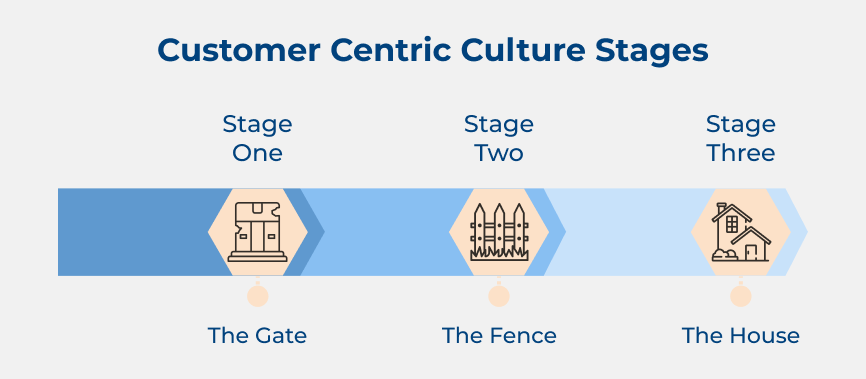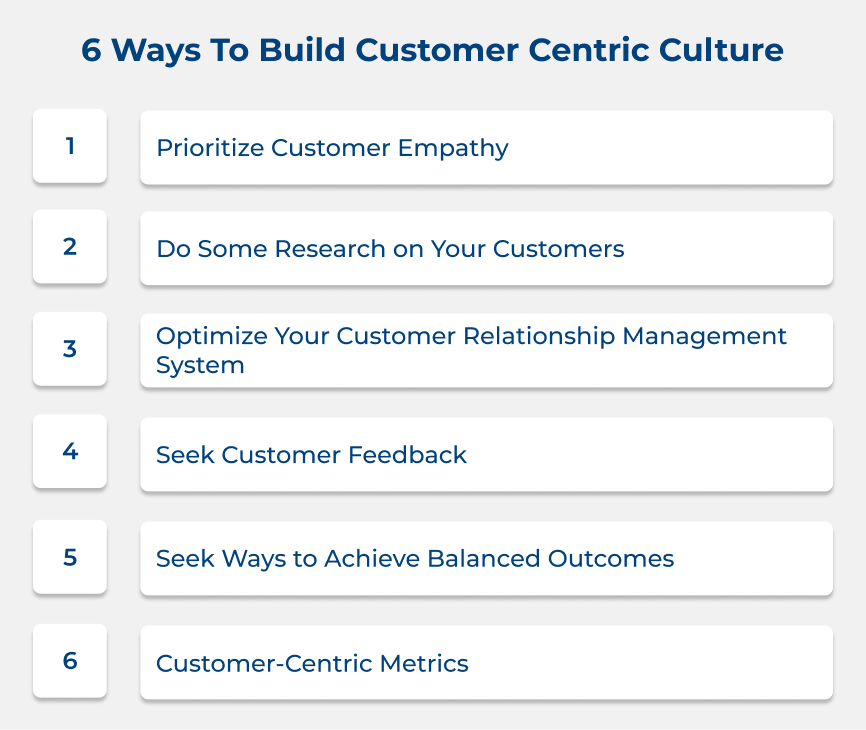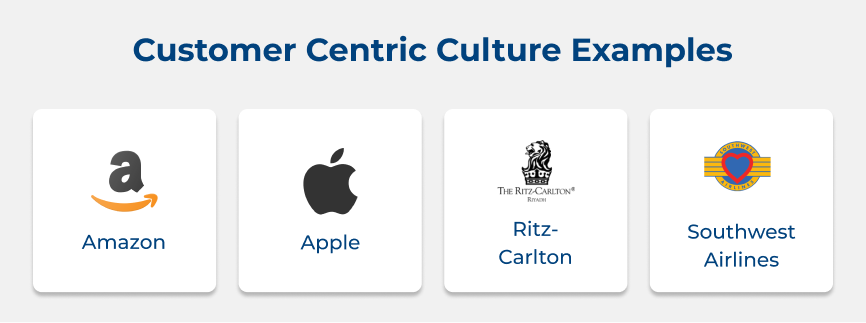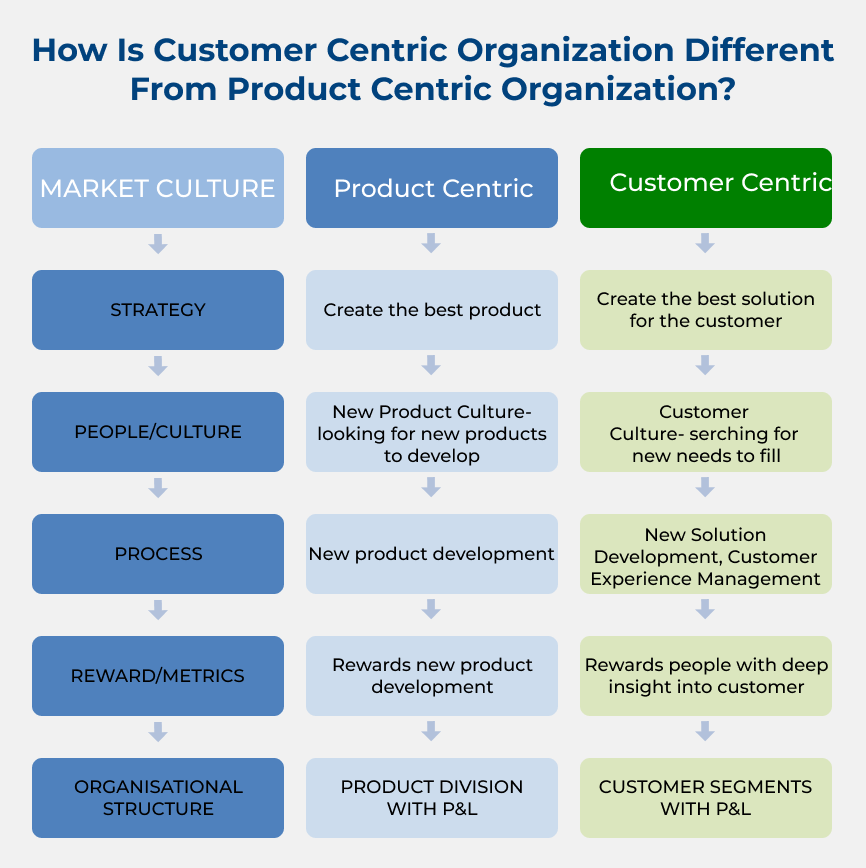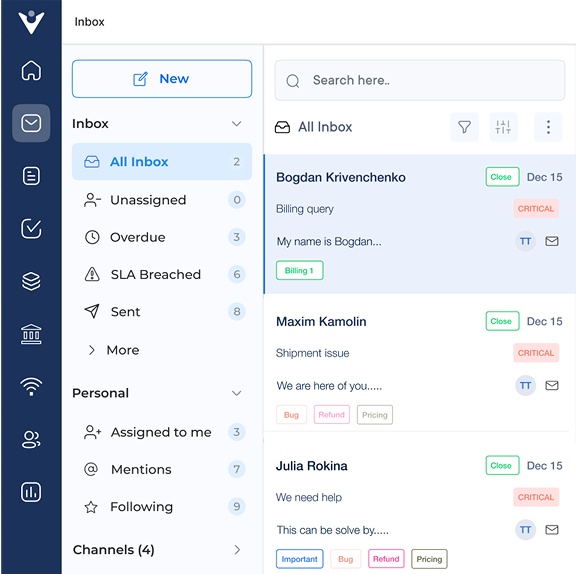1. Prioritize Customer Empathy
Customer empathy refers to the ability to understand and share the feelings of the customers. The approach is about stepping into the shoes of the customers to truly understand their needs, desires and pain points. It helps to create a deeper connection and build trust with customers. Empathy is the most important factor in building customer loyalty.
Empathy not only improves customer satisfaction but also boosts customer loyalty. It is a vital element in building customer centric skills as it’s the foundation upon which all customer-focused initiatives and strategies are built. When a company prioritizes customer empathy, it creates a mindset where every employee seeks to understand and meet the needs of the customers.
Pro tips:
- Actively listening to the customers doesn’t only mean hearing their words but also understanding the emotions and motivations behind them.
- Encouraging feedback and being open to criticism shows that are continuously striving to improve.
- Empower the employees to make decisions that prioritize customer satisfaction.
2. Do Some Research on Your Customers
An effective way to build a customer centric culture is by doing thorough research on the customers. It gives valuable insights into the target audience, enabling you to tailor the solutions to better meet their expectations. Understanding the customers’ pain points plays a major role in improving the overall experience and providing proactive solutions.
Researching the customers also aids in building a customer oriented growth culture within the company. When employees have a deep understanding of their customers, it influences their decision-making processes and promotes a customer-focused mindset throughout the company. The culture shift establishes better alignment with customer needs..
Pro tips:
- Use analytics tools to track customer behavior and preferences on your website or social media platforms.
- Regularly communicate with the customers through feedback forms or online communities to stay updated on their evolving needs.
- Collaborate with the sales and customer support teams to gain real-time insights from direct customer interactions.
3. Optimize Your Customer Relationship Management System
Customer relationship management (CRM) refers to the strategies, technologies and practices that organizations use to analyze customer interactions throughout the customer lifecycle. It is an essential tool for businesses to enhance customer satisfaction, streamline processes and improve overall efficiency.
Optimizing the CRM system also helps in identifying customer trends, allowing them to anticipate their needs and proactively address any concerns or issues. The proactive approach demonstrates the commitment to customer satisfaction and reinforces a customer centricity organization.
Pro tips:
- Regularly update the customer data to ensure its accuracy and relevancy.
- Integrate the CRM system with other business tools and platforms to streamline processes.
- Train the employees on how to effectively use the CRM system and leverage its features to enhance customer interactions.
4. Seek Customer feedback
Customer feedback is an essential component of building a customer experience culture within any organization. It refers to the process of collecting and analyzing information from customers regarding their experiences with a company’s offerings. The feedback can be gathered through various channels such as surveys, interviews, social media platforms or online reviews. The feedback can then be leveraged to boost customer satisfaction and drive business growth.
Collecting customer feedback shows a commitment to continuously improving and providing the best possible experience. The approach not only builds trust but also creates a loyal customer base. When customers feel heard, they are more likely to become advocates for the company, leading to increased customer retention and referrals.
Pro tips:
- Offer customers various ways to provide feedback and encourage participation.
- Ask targeted questions about different aspects of the customer experience to gather relevant and actionable feedback.
- Show customers that their feedback is acknowledged and appreciated by providing timely responses.
5, Seek Ways to Achieve Balanced Outcomes
Establishing a customer oriented growth culture has become paramount for organizations aiming to succeed. One effective approach to achieving this is by seeking ways to achieve balanced outcomes. Seeking balanced outcomes allows organizations to strike a harmonious balance between achieving their business objectives and satisfying customer needs.
Emphasizing balanced outcomes helps build a customer service center culture by placing customers at the forefront of decision-making processes. Actively seeking feedback, understanding customer pain points and tailoring the solutions enables the companies to establish a more personalized experience that resonates with their target audience.
Pro tips:
- Encourage employees to prioritize customer needs in their work and decision-making.
- Regularly collect feedback from customers to understand their preferences and incorporate the data into strategic decision-making.
- Adapt processes based on changing customer expectations and market trends to remain competitive.
6. Customer-Centric Metrics
Customer-centric metrics are a set of data-driven measurements that focus on evaluating and improving the customer experience. The metrics go beyond traditional business metrics, instead prioritize customer satisfaction, loyalty and engagement. The advantage of customer-centric metrics is that they provide valuable insights into how well a company is meeting its customers’ needs and expectations.
Making the customer-centric metrics a priority allows the companies to shift their focus from solely internal performance indicators to customer-focused outcomes. The change in mindset encourages the workforce to consider the impact of their actions on the customer and strive to deliver exceptional experiences.
Pro tips:
- Ensure the metrics being tracked directly reflect what matters most to the customers.
- Educate employees about the significance of the metrics in driving business success and creating customer loyalty.
- Tie employee performance and rewards to customer-centric metrics to motivate teams to aim for higher standards.
Customer Centric Culture Examples
Let’s dive into four inspiring examples of companies that have successfully built and embraced a customer-centric culture.






